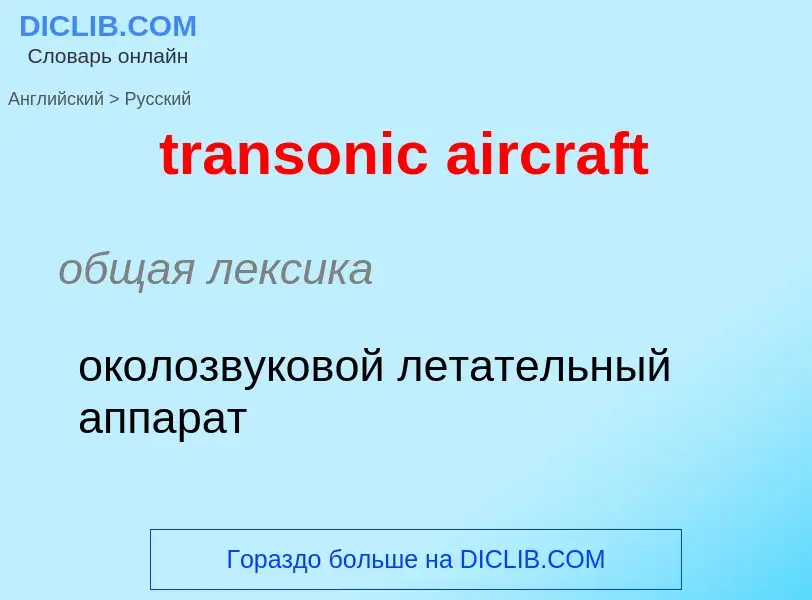Перевод и анализ слов искусственным интеллектом ChatGPT
На этой странице Вы можете получить подробный анализ слова или словосочетания, произведенный с помощью лучшей на сегодняшний день технологии искусственного интеллекта:
- как употребляется слово
- частота употребления
- используется оно чаще в устной или письменной речи
- варианты перевода слова
- примеры употребления (несколько фраз с переводом)
- этимология
transonic aircraft - перевод на русский
общая лексика
околозвуковой летательный аппарат
[træn'sɔnik]
общая лексика
околозвуковой
трансзвуковой
синоним
Смотрите также
прилагательное
общая лексика
околозвуковой
Определение
Википедия
.jpg?width=120)
Transonic (or transsonic) flow is air flowing around an object at a speed that generates regions of both subsonic and supersonic airflow around that object. The exact range of speeds depends on the object's critical Mach number, but transonic flow is seen at flight speeds close to the speed of sound (343 m/s at sea level), typically between Mach 0.8 and 1.2.
The issue of transonic speed (or transonic region) first appeared during World War II. Pilots found as they approached the sound barrier the airflow caused aircraft to become unsteady. Experts found that shock waves can cause large-scale separation downstream, increasing drag and adding asymmetry and unsteadiness to the flow around the vehicle. Research has been done into weakening shock waves in transonic flight through the use of anti-shock bodies and supercritical airfoils.
Most modern jet powered aircraft are engineered to operate at transonic air speeds. Transonic airspeeds see a rapid increase in drag from about Mach 0.8, and it is the fuel costs of the drag that typically limits the airspeed. Attempts to reduce wave drag can be seen on all high-speed aircraft. Most notable is the use of swept wings, but another common form is a wasp-waist fuselage as a side effect of the Whitcomb area rule.
Transonic speeds can also occur at the tips of rotor blades of helicopters and aircraft. This puts severe, unequal stresses on the rotor blade and may lead to accidents if it occurs. It is one of the limiting factors of the size of rotors and the forward speeds of helicopters (as this speed is added to the forward-sweeping [leading] side of the rotor, possibly causing localized transonics).

![F/A-18]] F/A-18]]](https://commons.wikimedia.org/wiki/Special:FilePath/FA-18 Hornet breaking sound barrier (7 July 1999).jpg?width=200)
![The [[Sears–Haack body]] presents a cross-sectional area variation that minimises [[wave drag]]. The [[Sears–Haack body]] presents a cross-sectional area variation that minimises [[wave drag]].](https://commons.wikimedia.org/wiki/Special:FilePath/Sears-Haack.png?width=200)
![supercritical wings]] supercritical wings]]](https://commons.wikimedia.org/wiki/Special:FilePath/Shock wave above airliner wing (7).jpg?width=200)

